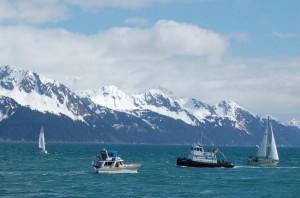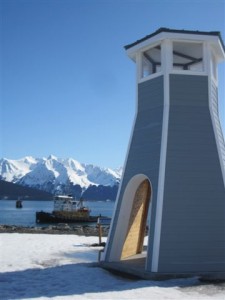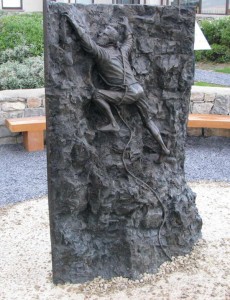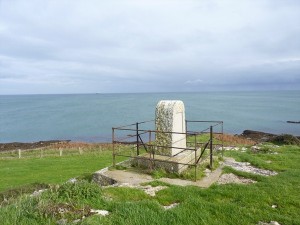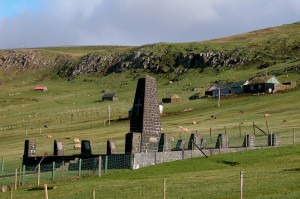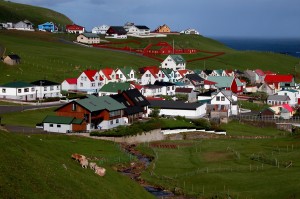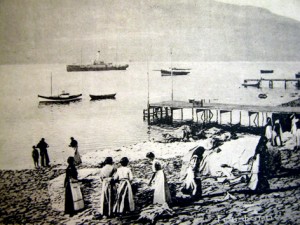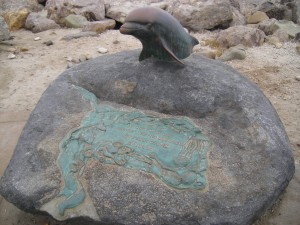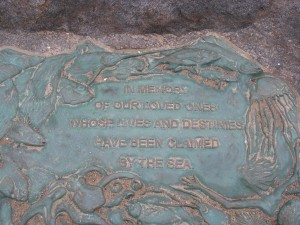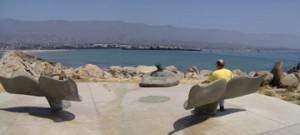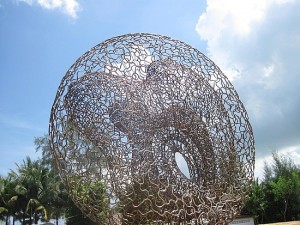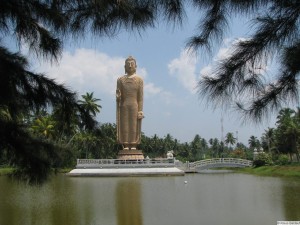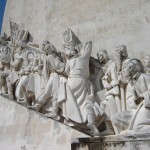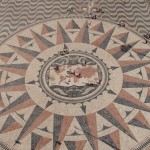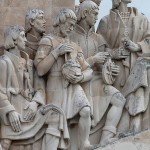Archive for the 'Uncategorized' Category
One of the most satisfying aspects of writing this blog is to hear from people around the world about existing memorials that are new to me and to learn about entirely new memorials nearing completion and dedication. Mike Glaser of the Seward Mariners’ Memorial Committee has been very kind in keeping me advised of the progress of a new memorial in Seward, Alaska that will be dedicated on May 20, 2012. This memorial has taken almost a decade of hard work to bring from concept to dedication – and another 18 months of effort will be required to complete all the aspects of the project design.
It would be difficult to imagine a more beautiful setting for a mariners’ memorial than on this site at the breakwater overlooking Resurrection Bay. The maritime history of Seward began in 1792 and continues through today – whaling, commercial fishing, recreation, and military activities are all woven into the rich fabric of the area. Through the centuries many of those mariners have been lost at sea. The Mariner’s Memorial will become a place where these souls can be remembered and honored. There are also plans to incorporate a section of the memorial in honor of the victims of the 1964 earthquake.
The best way to learn about the memorial is the visit their fine web site at http://www.sewardmarinersmemorial.org/home. Take some time to read about the design and plans for the site, view the construction project photos and videos, and learn more about several of their dedicated volunteers who made this all happen. If you know of someone who should be honored, then please consider ordering a memorial plaque for permanent display. If not, then please make a donation to this fine cause. As I’ve mentioned in this blog before, it’s not always the design and construction funding that is the most difficult to obtain. Ongoing maintenance and care can often be the larger challenge. Please consider donating to this effort.
My home in California is located a few miles from a state park that contains the home and gravesite of the writer Jack London. A museum within the park displays many of London’s original photographs and writings of his time in Alaska. I am quite certain that he once looked out upon the vistas of Resurrection Bay. In addition to writing about Alaska, London wrote one of the enduring classics of maritime life – The Sea Wolf. One of the early lines of this remarkable story concerns burial at sea and its brutal finality…
“I only remember one part of the service,” he said, “and that is ‘And the body shall be cast into the sea’. So cast it in.”
The new Mariners’ Memorial in Seward will certainly be an appropriate place to contemplate the souls lost off her wild and most beautiful shores…
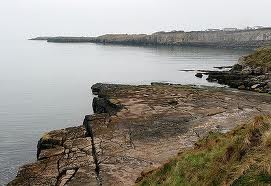 Todays post is inspired by one of my favorite songs, “Isaac Lewis”, by the brilliant singer/songwriter Tom Russell.
Todays post is inspired by one of my favorite songs, “Isaac Lewis”, by the brilliant singer/songwriter Tom Russell.
The Royal Charter was a steam clipper built and launched in 1855. Steam clippers were a new type of ship in the mid 1800s – iron hulls, with the lines and sails of a traditional wooden clipper, but also equipped with an auxiliary steam engine which could be used when suitable wind was not available. The Royal Charter was mainly used as a passenger ship between Liverpool and Australia, a trip she could make in under 60 days. She was capable of carrying 600 passengers, with a crew exceeding 100.
In October 1859, the Royal Charter was returning to Liverpool from Melbourne. Aboard were over 370 passengers and a crew of 112. Among the passengers were many gold miners, who were carrying large amounts of gold on their persons, as well as a large consignment of gold carried as cargo. On the night of October 26 the ship was caught in a storm later to be known as the “Royal Charter Gale”. Over 200 ships were lost to this storm. The Royal Charter attempted to anchor offshore of Porth Alerth to ride out the gale, but hurricane force winds caused the anchor chains to snap. Despite cutting the masts and use of the auxiliary engine, the ship was pushed into a sandbar near shore in the early morning hours. Several hours later the rising tide and gale force winds drove her on to the rocks at a point just north of Moelfre on the north coast of Angelsey. The Royal Charter was rapidly battered to pieces by the rocks. One crew member, Maltese born Guzi Ruggier also known as Joseph Rogers, was able to swim to shore with a line. 39 passengers and crew (all men) were able to be rescued. Over 450 others died, many lost at sea.
Monuments to the lives lost on the Royal Charter can be found on the cliffs above her final resting place and in a local cemetery, where the bodies that washed ashore over the next several weeks were buried. It is said that large quantities of gold were thrown up on the beach at Porth Alerth, with many local families becoming wealthy overnight as a result of the tragedy. Many pieces of wreckage of the ship can still be found at the base of the rocks at Moelfre, visible at low tide and to scuba divers.
Stories from shipwrecks often defy imagination. Perhaps few stories are as poignant as the story of Isaac Lewis. Lewis was a young man from northern Wales who sailed to Australia and back, only to die in the Royal Charter wreck. In the last moments of his life he was able to see his father on the headland, and legend says to shout “Oh father, I have come home to die”. Three days after the storm cleared the body of Isaac Lewis washed ashore in Wales, landing less than 100 yards from his father’s front door…
You can view Tom Russell performing his haunting tribute to Lewis by visiting the following link. After that I encourage you to explore more of the work of this truly gifted musician and poet.
http://www.youtube.com/watch?v=7ALfs81CFdE
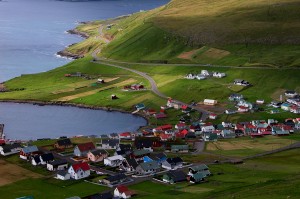 Lost at Sea memorials are found along the coasts of every nation on earth where the oceans batter their shores. One of the joys of writing this blog is the discovery of a memorial in a place new to me. Such was the experience with this post.
Lost at Sea memorials are found along the coasts of every nation on earth where the oceans batter their shores. One of the joys of writing this blog is the discovery of a memorial in a place new to me. Such was the experience with this post.
Porkeri is a village in the Faroe Islands, a self-governing territory within the Kingdom of Denmark. It is located where the Norwegian Sea meets the greater North Atlantic, approximately equal distance from Scotland and Greenland.
The village of Porkeri dates back to at least the 14th century. Today it has a population of slightly over 300. The local church dates from 1847 and is greatly constructed from material donated by seamen who survived lethal storms on the sea – a tradition known as almissu, to donate to God if they got home alive. It makes me think of the words of Joseph Conrad from “Youth”:
“I see it always from a small boat – not a light, not a stir, not a sound. We conversed in low whispers, as if afraid to wake up the land…. It is all in that moment when I opened my young eyes on it. I came upon it from a tussle with the sea.”
The Lost at Sea memorial in Porkeri contains the names of 65 local seamen who were lost forever to the cold waters of the North Atlantic. The first name dates from 1808. Names have been added in the ensuing two centuries. No doubt more names will be added in the decades and centuries to come – and one has to wonder about the countless unknown souls lost in the centuries before the first record was retained permanently from 1808…
The best part of writing this blog is discovering a memorial new to me that was conceived and brought to reality by the family and friends of those lost at sea. The memorial to the research vessel Marie is such a piece.
In 1960 the research vessel Marie was lost in the Santa Barbara Channel, while conducting experiments on the potential use of underwater infrared technology. Three of the seven men aboard the craft were claimed forever by the Pacific Ocean. The bodies of the other four crew members were recovered within a few weeks of the accident in the waters near Santa Barbara. Forty years later a memorial to the Marie and her crew was dedicated at a site very near where the Marie departed on her final journey.
The story of the Marie, her crew, and the memorial is best learned by visiting the web site devoted to this accident. Please take the time to watch the twenty minute video history that you’ll find when you first visit the site. Please use the link below:
http://www.project-tnt.com/marie/index.htm
I find the memorial to be simple, elegant and memorable. The very conscious decision not to list the Marie crew members on the memorial, but instead to dedicate the memorial to all those lost at sea, only adds to its timeless quality…
On December 26, 2004 a 9.0 earthquake near the west coast of Sumatra generated a tsunami that slammed into the coastline of 11 Indian Ocean countries, from east Africa to Thailand. By the end of the day 150,000 people had died. The final death toll was 283,000. Many tens of thousands of victims were swept out to sea.
We have all seen the photographs and videos of the 2004 tsunami and its horrific aftermath, as well as the equally similar and tragic event in Japan earlier this year. Words simply are not enough to provide a permanent tribute to such loss. It is humanity’s great gift to have artists who provide lasting memorials for the living and for future generations – static images that somehow come to life in the eyes and minds of the viewer. These memorials are as much a record of the event as the written word, or the photograph, or the cell phone video.
This post contains just a few of these monuments – from India, Sri Lanka, Malaysia, the Maldives, Indonesia, and Thailand. Each memorial possesses a different emotional power.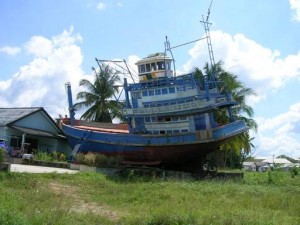

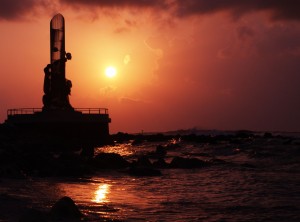
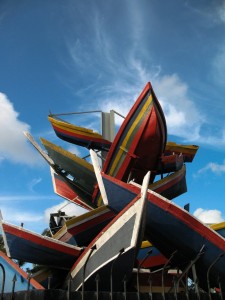
I have been, and will continue to be, very careful about invoking politics, religion, or other controversial topics into this blog. Such discussions have no place here. This is a site to remember and honor the souls of those lost at sea – and to marvel at the beautiful memorials created by survivors, family members, friends, governments, talented artists, and the many generous contributors and volunteers who work so long and hard to make these memorials grow from an idea to reality.
Unfortunately, the dedication of any memorial is not the end of the journey. Most memorials are designed and constructed using private funds. Often, not enough thought is given to the long-term funding and maintenance requirements of the memorial. Human traffic and the natural elements will take their toll – the memorial can become weathered, eroded, or damaged by vandals, with no funding available to repair the damage or even to provide minimal upkeep.
If you live near one of these beautiful memorials, please consider volunteering your time and energy towards maintaining the site in its original state. If you’re a visitor, then please give whatever money you can to the foundation responsible for its upkeep.

 In 1944 an incident eerily similar to the SS Struma sinking took place. In this instance 350 Jewish refugees bound for Palestine from Hitler’s Europe were lost at sea.
In 1944 an incident eerily similar to the SS Struma sinking took place. In this instance 350 Jewish refugees bound for Palestine from Hitler’s Europe were lost at sea.
The Mefkure (sometimes known as Mefkura) sailed from the port of Constanta on August 5, 1944, accompanied by two other ships. Their destination was to be Istanbul, in neutral Turkey. The Jewish refugees would then attempt to enter Palestine by whatever means that could be devised.
After midnight the Mefkure was illuminated by flares from an unknown vessel, then fired upon, and finally torpedoed. The captain and 6 of the crew escaped the sinking ship in a lifeboat. Of the passengers – only 5 of a suspected total of 350 survived. After WWII it was revealed that the Mefkure, like the Struma three years earlier, had been torpedoed and sunk by a Soviet submarine – in this case the SC-215.
The first monument to the left shows the routes of the fateful final voyages of both the Struma and the Mefkure – the incidents were three years apart, but joined together forever in this monument. The second sculpture is a memorial to the motor schooner Mefkure and to all her lost souls resting on the bottom of the Black Sea…
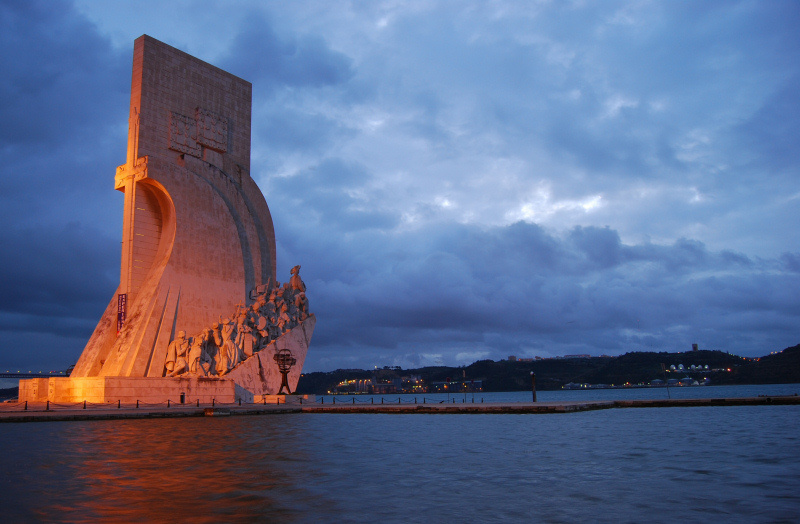
 First, the most important part of this post. The two breathtaking photographs shown above are the work of Aires dos Santos. I have spent hours admiring his extraordinary work on the Internet – every subject imaginable – each and every photograph beautiful and memorable. I encourage everyone reading this post to view his work at http://www.trekearth.com/members/AiresSantos/. You will not be disappointed.
First, the most important part of this post. The two breathtaking photographs shown above are the work of Aires dos Santos. I have spent hours admiring his extraordinary work on the Internet – every subject imaginable – each and every photograph beautiful and memorable. I encourage everyone reading this post to view his work at http://www.trekearth.com/members/AiresSantos/. You will not be disappointed.
The Monument to the Discoveries is located on the estuary of the Tagus river in Lisbon, Portugal – the site where countless ships sailed into the unknown during the great Age of Exploration of the 15th and 16th centuries. During these 200 years the Europeans extended their cultures to virtually the entire globe. The Portuguese were second to none in their curiosity and daring. Henry the Navigator, Vasco da Gama, Saint Francis Xavier, Ferdinand Magellan, Pedro Escobar – their names echo through the annals of discovery. Their reach included the Americas, India, Africa, Asia, and the Pacific islands.
The 52-meter high monument is in the shape of the prow of a ship. The bow faces the river – the stern side features a sword reaching the full height of the structure. On the sides of the monument are representations of 33 Portuguese instrumental in the quest for discovery – explorers, scientists, artists, missionaries, and cartographers.
The monument was conceived and executed by artist Cottinelli Telmo and sculptor Leopoldo de Almeida as part of the Portuguese World Fair in 1940. The original materials were perishable, so it was rebuilt in concrete in 1960 to commemorate the 500th anniversary of the death of Henry the Navigator. A stunning mosaic wind rose forms the pavement leading up to the monument. Displayed within the wind rose is a world map with the routes of famous Portuguese explorers. The mosaic was a gift from South Africa in 1960.
Today we have still have explorers – they launch into space and explore the great depths of the oceans – they climb mountains and risk their lives in caves. Despite modern technology and all precautions, some die. We hear about their deaths – we celebrate their courage and mourn their loss. But think about all those lost at sea during the Age of Discovery – those countless souls who sailed from the estuary of the Tagus river in Lisbon, or from England or France or the Netherlands or Spain – not knowing their destination or their fate. Their names and faces are not found on the Internet or in history books. Think of them also when you admire the beauty of the Monument to the Discoveries…
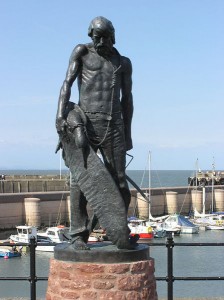
 In the village of Watchet (Somerset, England) is a haunting work of art by the Scottish sculptor Alan B. Herriot. This beautiful piece is a tribute to the English poet Samuel Taylor Coleridge and his ageless tale “The Rime of the Ancient Mariner”. As a metaphor, there is perhaps no more famous allusion than “an albatross around my neck”. Coleridge penned the lines that created this symbolism in 1798 – a testament to the power of poetry.
In the village of Watchet (Somerset, England) is a haunting work of art by the Scottish sculptor Alan B. Herriot. This beautiful piece is a tribute to the English poet Samuel Taylor Coleridge and his ageless tale “The Rime of the Ancient Mariner”. As a metaphor, there is perhaps no more famous allusion than “an albatross around my neck”. Coleridge penned the lines that created this symbolism in 1798 – a testament to the power of poetry.
Great poetry can be enduring, whether accurate to truth or even legend. The albatross, in the actual lore of the sea, is not usually the sign of an encumbrance. It is quite the opposite. An albatross following a ship, to any real sailor, is a sign of good fortune.
I have been fortunate enough to see these magnificent birds in flight. While I have sailed many of the world’s oceans on barques and aircraft carriers, and flown over the world’s oceans in the finest aircraft made by man, I remain humbled by the albatross. They spend years at a time without ever touching land – yet they survive. In flight, they are the definition of perfection of purpose and beauty. No aircraft designed and flown by man will ever possess the purity of this single magnificent bird – with the wings of an angel and a feather touch to the wind.
The lore of the sea actually relates that each sailor who dies at sea will return reincarnate as an albatross. That is the legend that the sailors abide. Who’s to say that it isn’t true?
Please take advantage of the Internet and download a copy of “The Rime of the Ancient Mariner” to your computer. It is a fascinating tale. And please visit the link below to watch and hear Alan Herriot describe the creation of his memorable statue.
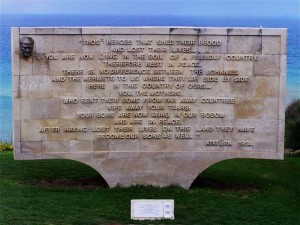 In the inglorious and brutal history of warfare, few places have ever witnessed the carnage that played out in World War I at a place in Turkey called Gallipoli. From April 25, 1915 to January 9, 1916 a joint British and French operation was conducted to capture the Ottoman Empire capital of Istanbul and to control the Dardanelles – the sea route to Russia. The British and French operation failed, but only after the deaths of over 130,000 participants – with an additional 261,000 wounded. Many experts estimate that the dead and wounded total is actually significantly higher.
In the inglorious and brutal history of warfare, few places have ever witnessed the carnage that played out in World War I at a place in Turkey called Gallipoli. From April 25, 1915 to January 9, 1916 a joint British and French operation was conducted to capture the Ottoman Empire capital of Istanbul and to control the Dardanelles – the sea route to Russia. The British and French operation failed, but only after the deaths of over 130,000 participants – with an additional 261,000 wounded. Many experts estimate that the dead and wounded total is actually significantly higher.
The casualties came from seemingly everywhere – the United Kingdom, Turkey, France, Australia, New Zealand, British India, Newfoundland, Germany, Austria, Hungary, and French West Africa. Gallipoli was an equal opportunity place of courage, sacrifice, devotion to duty, and death. Almost half of the dead were never identified – body parts by the thousands buried in mass graves. Hundreds more died in naval actions supporting the landings, forever lost to the sea off the coast of Turkey
Cemeteries and monuments are found throughout the area. They are somber and beautiful and meticulously maintained by several countries. One of the heroes on the Turkish side was Mustafa Kemal. His rise to the presidency of Turkey began at Gallipoli – a place he would always hold sacred for anyone, regardless of country, who fought at that horrific time and place. In 1934 Kemal, now known as Ataturk, was President of Turkey. He ordered the construction of a monument at ANZAC Cove. ANZAC was the Australian-New Zealand Army Corp. ANZAC Cove was the location of one of the landings made by Australian and New Zealand Army troops during the campaign. ANZAC Cove was a place of particular killing and sorrow.
Expand the photograh and read the words of Ataturk. Seven decades have not decreased their power or eloquence – nor will seven centuries.
